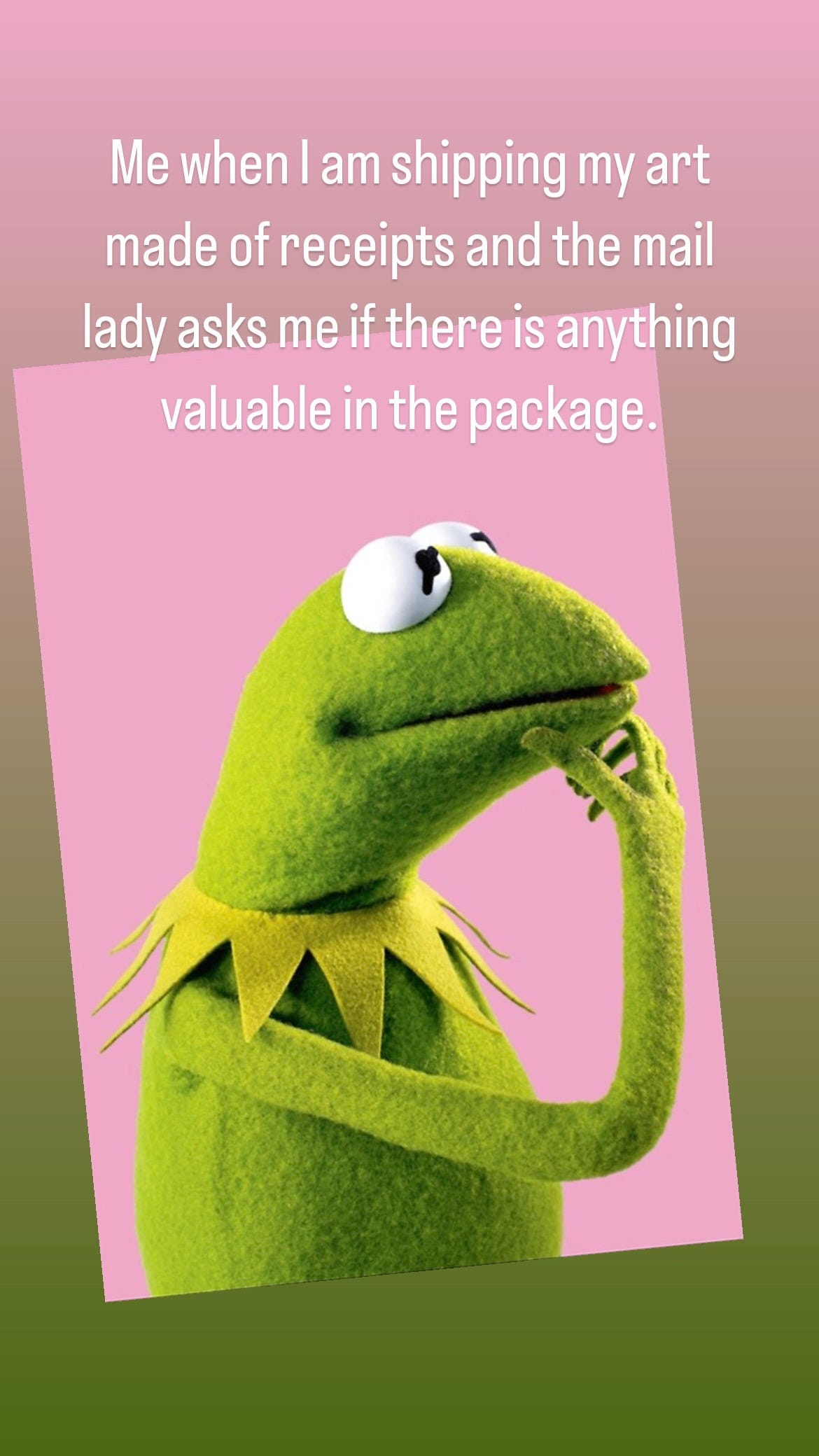The Guy Who Makes Art Out of Receipts Questions Its Value
Regarding an awkward moment at the post office
There was an awkward moment at the post office this week. The postal worker asked me if there was anything of value in my envelope. Funny how a simple question can rattle your brain.
In case you missed it, I have a project where I create animations using old receipts. I’ve been giving them away on Instagram to new followers but I held a few prints back to put up for sale at madexade.etsy.com. A couple sold and hence the trip to the post office.
The “how much is it worth?” question is something that all artists wrestle with when it is time to put a price tag on their work. It is extra tricky when your art is made of garbage. On the one hand my prints could never be replicated. On the other hand it is a scrap of paper that any normal person would have thrown away years ago instead of hoarding in a shoebox. To me that’s an interesting idea by itself. And it’s the ideas that give the work value, not the quality of paper it is printed on.
Economic logic pushes you to make things that are easy to price. It recommends that you make something that you can easily replicate in order to satisfy demand. Why make something if you can’t mass produce it? You should make sure it fits nicely into a category because if people don’t know what type of thing it is, how will they know what to do with it, or even know if they want it? It should be priced as high as people will pay but also as low as possible so that competitors won’t undercut you. Things should be made with the highest quality materials, otherwise it won’t last forever.
That logic is so obvious that we might not even realize that there is an alternative. So allow me to recommend a rejection of that traditionally “safe” advice. It goes like this:
Seek an audience of one. That one person is you. If you’re lucky there will be other people like you who naturally like what you are doing. Mass production can only water down the potency of your work as you try to satisfy the most amount of people with the least amount of objections. Bo–ring.
Be cautious about categories. If your work fits nicely on a shelf or in a catalog next to similar products that might be a warning that you are sacrificing originality in order to please the algorithms/advertisers/gatekeepers.
Whenever you can, give your art away. Let the bean counters argue about the dollar value. And try not to let your ego get attached to the amount whether it is big or small.
Don’t worry about lasting forever. The ephemeral is vastly under appreciated. When you know something won’t last you love it madly while you can, and you mourn it when it is gone. Isn’t that better than death by storage?
So what did I tell the postal worker? I said, no. Not for idealogical reasons, I just didn’t want to pay extra for insurance. It might get lost in the mail but even that ending contains a bit of beauty doesn’t it?
Stay creative. Your friend,
Ade






